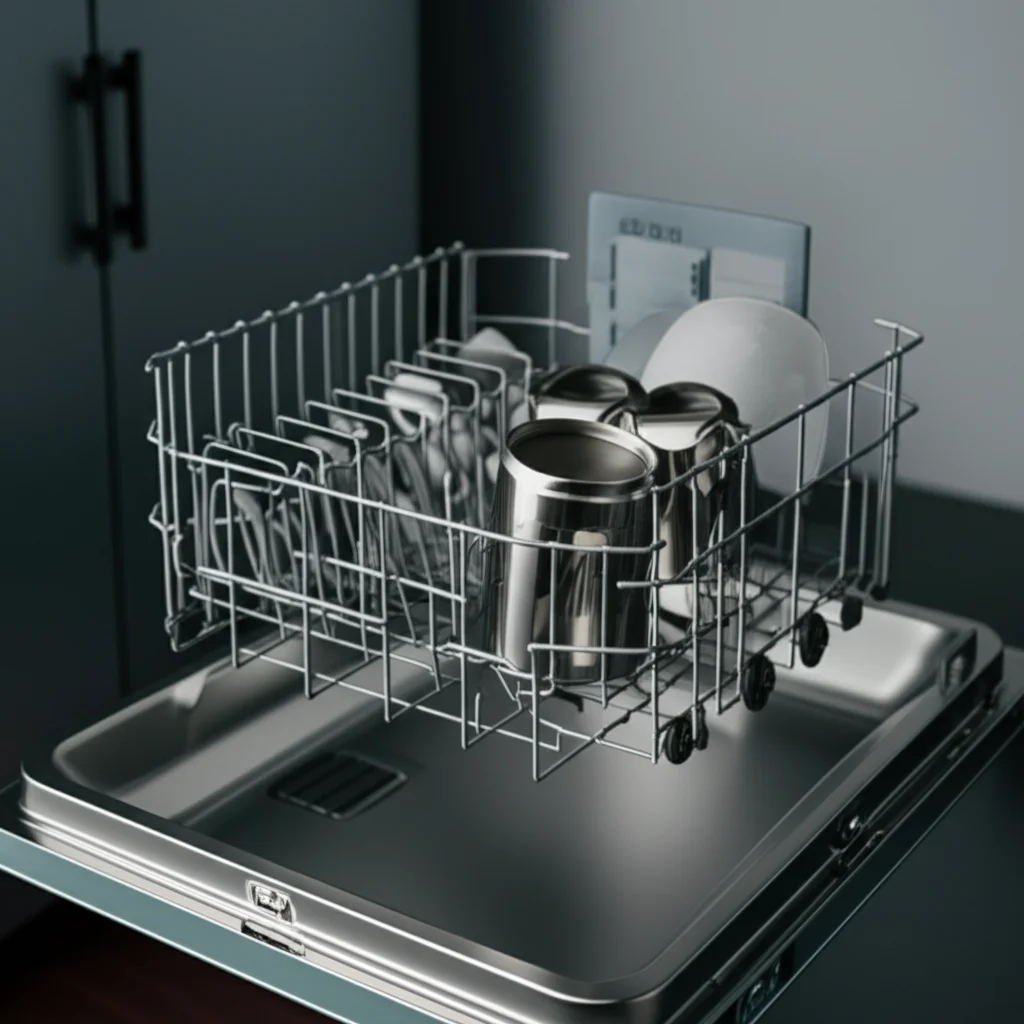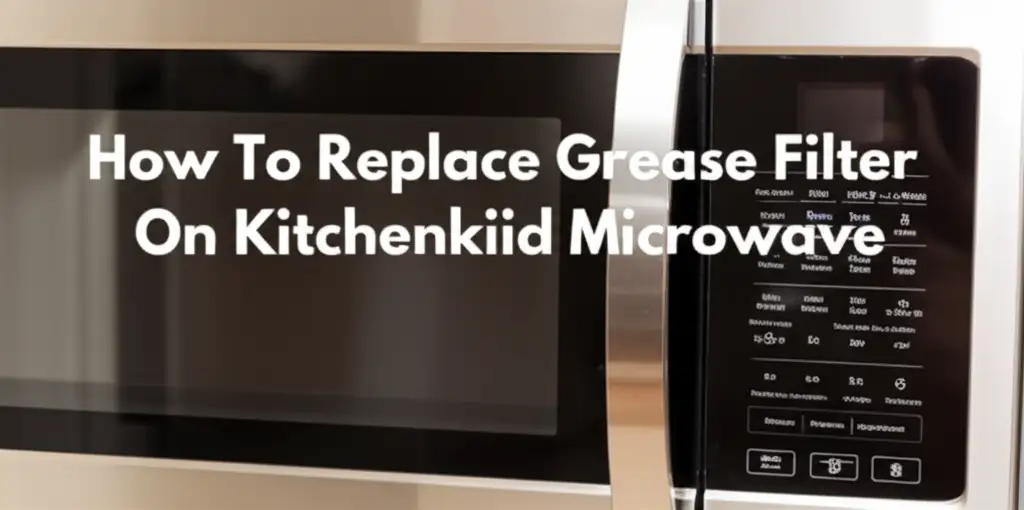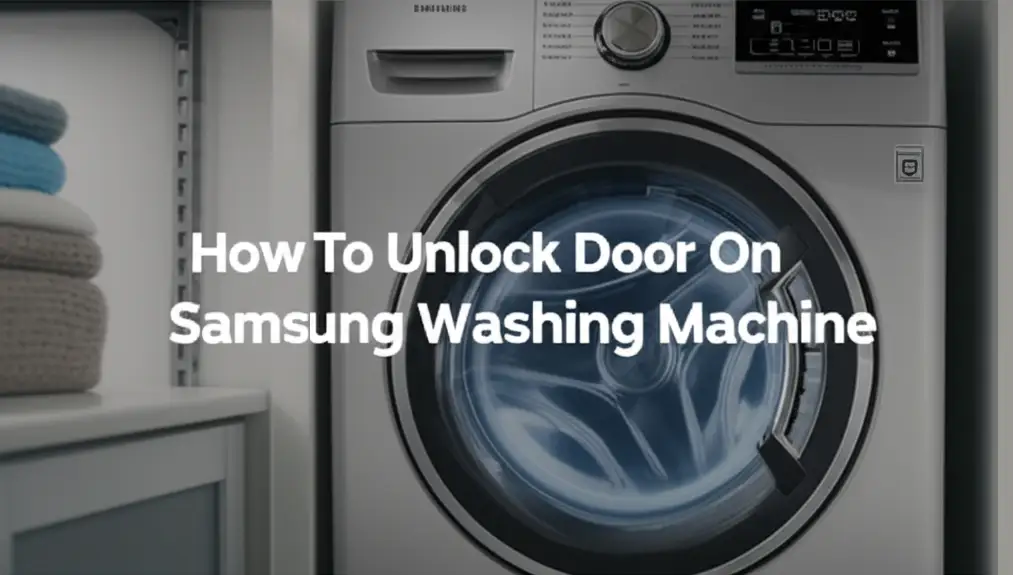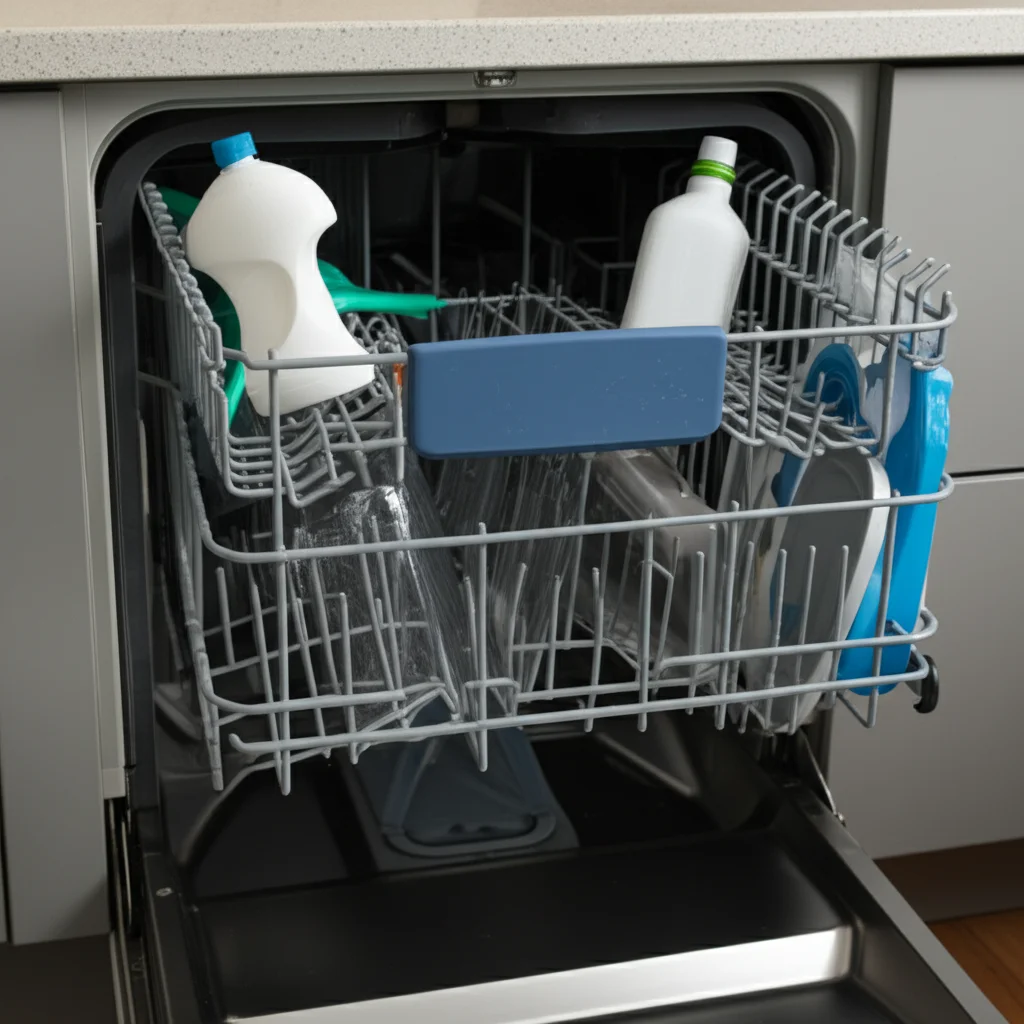· Katria Melrose · Home Appliances · 18 min read
What Is Air Gap Dishwasher

Understanding Your Dishwasher Air Gap
Have you ever noticed a small, cylindrical device on your kitchen counter near the sink? It might look like just another piece of hardware, but this often-overlooked component plays a crucial role in your home’s plumbing safety. This little helper is what we call an air gap, and it is a vital part of many dishwasher installations. Understanding its function is important for maintaining a healthy and safe kitchen environment.
Many homeowners do not know what an air gap dishwasher system is or why it exists. You might wonder if you even need one for your own appliance. This comprehensive guide will explain everything you need to know. We will cover what an air gap is, its specific purpose, how it works, and why it is so important for preventing water contamination. Get ready to uncover the secrets behind this unassuming yet powerful device that safeguards your drinking water.
Takeaway
- An air gap protects your drinking water from dishwasher wastewater.
- It creates a physical break to prevent backflow contamination.
- Many local plumbing codes require an air gap for safety.
- Regular cleaning and checking of the air gap prevent common issues.
- Understanding its function helps you maintain a safe kitchen.
An air gap dishwasher system is a plumbing device that prevents contaminated water from flowing back into your clean water supply. It creates an essential physical break between the dishwasher’s drain hose and the home’s drain system. This simple yet effective design protects your drinking water from potential pollution.
What is an Air Gap Dishwasher System?
An air gap dishwasher system refers to a specific plumbing setup for your dishwasher’s drain. This setup includes a small, often cylindrical device mounted on your kitchen counter or sink. Its main job is to provide a crucial barrier. It ensures that dirty water from the dishwasher never mixes with the fresh water in your home. This protection is a core function of the air gap.
The device creates an “air gap” or open space. This space ensures that even if there is a sudden drop in water pressure or a clog in the drain line, wastewater cannot be siphoned back. Water from the dishwasher enters the air gap at one point. It then drains out through a separate connection to the garbage disposal or sink drain. This design makes backflow physically impossible.
Many building codes across the United States require air gaps for dishwashers. This requirement highlights their importance in public health and safety. The air gap acts as the primary defense against cross-contamination. Without it, sewer water could enter your clean water pipes, creating a serious health hazard. So, while it might seem like a small part, its role is truly significant for your family’s well-being.
How Does an Air Gap Prevent Backflow?
The core function of a dishwasher air gap is to prevent backflow. Backflow happens when water reverses its direction of flow. In this case, it means dirty water from your dishwasher or drain system could flow back into your home’s potable (drinkable) water supply. This contamination poses a serious health risk. An air gap uses a simple, yet highly effective, physical principle to stop this from occurring.
Imagine a break in a pipe. If water cannot flow uphill against gravity without pressure, then an open space stops it. The air gap creates this open space. Dirty water from the dishwasher’s drain hose first enters the upper chamber of the air gap device. From there, gravity pulls it down into the lower chamber. This lower chamber then connects to your sink drain or garbage disposal.
The key is that the highest point of the dishwasher’s drain connection inside the air gap is above the flood level of your sink. This means that even if your sink overflows, or if there is negative pressure in the drain line (like a vacuum effect), the dirty water from the drain cannot be sucked back up into the dishwasher’s drain hose. It cannot cross the air gap. This physical separation is foolproof. It does not rely on valves or mechanical parts that could fail. This makes it a very reliable method for protecting your water supply. Understanding how your dishwasher drains is important, and you can learn more about how to get the dishwasher to drain if you encounter issues.
The Importance of Air Gaps in Plumbing Codes
Air gaps are not just a suggested plumbing practice; they are a mandated safety feature in many areas. Plumbing codes, at state and local levels, often specifically require the installation of an air gap for dishwashers. These codes exist to protect public health. They set minimum standards for water safety. The inclusion of air gaps in these codes highlights their critical role in preventing water contamination.
These regulations aim to prevent what plumbers call “cross-connections.” A cross-connection is any direct or indirect physical connection between a potable water system and a non-potable water system. Without an air gap, your dishwasher’s drain could become a direct cross-connection. This would allow wastewater to enter your clean water lines under certain conditions. For example, if there’s a sudden pressure drop in your home’s water supply, it could create a siphon. This siphon could pull dirty water from the drain back into your drinking water.
The air gap provides “air break” protection. This is the highest level of backflow prevention. It is considered superior to mechanical backflow preventers, which can wear out or fail. Because of this reliability, many jurisdictions demand air gaps. Always check your local plumbing codes to determine if an air gap is required for your dishwasher installation. Failing to comply with codes can lead to fines or safety hazards. Proper drainage is crucial for dishwashers, and issues like a dishwasher not draining can sometimes be related to components within this system.
Air Gap vs. High Loop: What’s the Difference?
When discussing dishwasher drain setups, two terms often come up: “air gap” and “high loop.” Both aim to prevent backflow, but they achieve this in different ways. Understanding their distinctions is important for proper installation and plumbing code compliance. Many people confuse them or think they are interchangeable, but they are not.
An air gap is a physical device you can see, typically mounted on your counter. It has two hoses connected to it. One hose comes from the dishwasher. The other hose goes to the drain or garbage disposal. The crucial part is the actual air space inside the device. This physical separation prevents any siphoning of dirty water back into the dishwasher or your potable water supply. It is a very robust and reliable backflow prevention method. If you need to clean this specific component, knowing how to clean an air gap can be helpful.
A high loop, on the other hand, is a simple bend in the dishwasher’s drain hose. The drain hose runs from the dishwasher up to the underside of the counter, forming a high curve, before dropping down to connect to the drain or disposal. The highest point of this loop must be above the level of the drain connection. The idea is that gravity will prevent water from flowing uphill past this high point. While a high loop offers some protection against standing water in the drain line from entering the dishwasher, it does not provide the same level of protection as an air gap. A high loop can still be susceptible to back-siphoning if there’s a strong enough negative pressure in the drain line or if the drain gets severely clogged and overflows. Many plumbing codes require an actual air gap device in addition to, or instead of, a high loop for maximum safety.
Installation and Placement of an Air Gap
Installing a dishwasher air gap is usually a straightforward process. It is often part of a new dishwasher installation or a kitchen remodel. The air gap device typically sits on your kitchen counter, right next to the sink. You might see it as a small, chrome, or colored cap. This visible placement is a key characteristic of an air gap.
First, you will need a dedicated hole in your countertop or in the sink itself. Most new sinks come with an extra pre-drilled hole for this purpose. If not, a hole must be drilled. The air gap device’s base passes through this hole. A rubber gasket and a large nut secure it from underneath the counter. This keeps it stable and prevents water leaks.
Next, two hoses connect to the air gap. One hose runs from the discharge port of your dishwasher to the inlet side of the air gap. This is the hose that carries dirty water out of the dishwasher. The second hose connects from the outlet side of the air gap to your garbage disposal or the sink drain. This hose carries the water from the air gap to the main drain system. It is important that both hoses are properly secured with clamps to prevent leaks. Also, ensure the outlet hose from the air gap slopes downwards consistently. This allows gravity to assist in drainage. Proper installation is critical for the air gap to function correctly and provide adequate backflow protection. If you ever have issues with your dishwasher draining, the air gap could be a place to check, similar to how you would troubleshoot when your dishwasher does not drain.
Common Air Gap Issues and Troubleshooting
While essential for safety, air gaps can sometimes cause minor problems. The most common issue is water leaking from the air gap cap on your countertop. This typically happens during the dishwasher’s drain cycle. It means water is not flowing freely through the air gap and into your drain. Often, the cause is a clog in the hose that runs from the air gap to the garbage disposal or sink drain. Food particles or grease can accumulate in this hose, restricting water flow.
To troubleshoot a leaking air gap, first, turn off your dishwasher. Next, locate the hose connected to the air gap’s outlet that leads to your garbage disposal or drain. Carefully disconnect this hose. You can then try to clear any blockage using a stiff wire or by flushing it with water. If your garbage disposal is clogged, this can also back up water into the air gap. Running the disposal can sometimes clear the issue. Always ensure the disposal is clear before running the dishwasher.
Another issue can be a clogged air gap device itself. Mineral deposits or food debris can build up inside. You can often remove the cap and clean the inside of the air gap device. This usually involves twisting off the top cover and clearing any visible debris. Regularly cleaning your air gap is a good preventative measure. You can learn more about general dishwasher maintenance, such as how to clean your dishwasher drain, which can indirectly help prevent air gap issues. Also, understanding how to clean mold in a dishwasher can provide insights into general cleanliness that affects plumbing components.
Maintaining Your Dishwasher Air Gap for Optimal Performance
Maintaining your dishwasher’s air gap is crucial for its longevity and continued effective operation. A well-maintained air gap ensures your home’s water supply remains protected. It also helps your dishwasher drain efficiently. Regular checks and simple cleaning steps can prevent most common problems. Think of it as a small but mighty guardian of your kitchen’s plumbing.
I recommend a quick visual inspection of your air gap about once a month. Look for any visible debris around the cap or signs of water leakage. If you notice any water pooling around the base of the air gap during a dishwasher cycle, it is a clear sign that attention is needed. This usually indicates a blockage.
Cleaning the air gap itself is straightforward. Many air gap covers simply twist off. Once the cover is removed, you can usually see inside the device. Use a small brush or a paper towel to wipe away any food particles, grease, or mineral buildup. Sometimes, a long, flexible brush can help clear the connecting hoses, especially the one leading to the garbage disposal. This hose is a common spot for clogs. You might also consider pouring a mixture of hot water and vinegar down the air gap after cleaning. This can help dissolve any lingering grease or scale. This is similar to how you might clean your dishwasher with vinegar for internal components. Keeping the entire drainage system clear ensures smooth operation and prevents inconvenient leaks or backups.
When Is an Air Gap Not Required? Alternative Drain Methods
While many plumbing codes mandate an air gap, there are specific situations where it might not be required. This usually depends on local regulations and the type of dishwasher installation. Understanding these alternatives is important for homeowners. Sometimes, other methods offer sufficient backflow protection.
One common alternative is a direct drain with a high loop. As discussed, a high loop involves elevating the dishwasher drain hose to its highest possible point under the counter. This high point must be above the sink’s flood level. The theory is that gravity will prevent backflow from the drain into the dishwasher. However, this method is generally considered less secure than an air gap because it does not create a true physical air break. It relies on gravity and the absence of strong siphoning effects. Many codes still require an air gap even if a high loop is present.
Another less common alternative involves dishwashers with built-in or integral air gaps. Some modern dishwashers include an internal backflow prevention device. These devices are designed to meet plumbing code requirements without the need for an external air gap device. If your dishwasher has such a feature, it will be specified in its installation manual. Always check your local plumbing codes. What is acceptable in one jurisdiction might not be in another. Local codes are the final authority on whether an external air gap is necessary for your home. When you are deciding what to look for in a dishwasher, checking its backflow prevention method can be a significant factor.
DIY Air Gap Maintenance Tips
Maintaining your dishwasher air gap doesn’t require a professional plumber for most issues. Many common problems, like minor clogs or leaks, are easy for a DIY enthusiast to fix. Regular, simple maintenance can prevent headaches and ensure your air gap works as it should. I find that quick checks save a lot of trouble down the line.
Here are some tips:
- Routine Visual Inspection: Make it a habit to glance at your air gap while using the kitchen sink. Look for any standing water around its base or slow draining from the dishwasher. This quick check can alert you to a problem early.
- Clear the Top Cap: If water leaks from the cap, the first step is to remove the cap itself. Most caps simply unscrew or lift off. Use an old toothbrush or a small bottle brush to clean out any food debris, grease, or mineral deposits you see inside the opening. This is often all it takes to resolve a small leak.
- Check the Drain Hose: The hose connecting the air gap to your garbage disposal or sink drain is a common culprit for clogs. This hose often accumulates food particles. Disconnect it (ensure the dishwasher is off first!) and flush it with hot water. You can also use a flexible drain brush to clear any blockages. Be gentle to avoid damaging the hose.
- Run Your Garbage Disposal: If your air gap drains into a garbage disposal, make sure the disposal is clear before running the dishwasher. A clogged disposal will back up water into the air gap, causing leaks. I always run my disposal for a few seconds before starting the dishwasher.
- Use Natural Cleaners: Periodically, you can pour a solution of baking soda followed by vinegar down the air gap (after removing the cap and clearing visible debris). Let it fizz, then flush with hot water. This can help break down grease and minor buildup. This method is similar to how you would clean a smelly dishwasher or clean your dishwasher with baking soda.
These simple steps will keep your air gap functioning smoothly and protect your home’s water quality.
Professional Help for Air Gap Issues
While many air gap issues are simple DIY fixes, there are times when calling a professional plumber is the best course of action. Knowing when to seek expert help can save you time, prevent further damage, and ensure your plumbing is up to code. Do not hesitate if you feel unsure.
Consider professional help if:
- Persistent Leaks: You have tried basic troubleshooting steps, like cleaning the air gap and its hoses, but water continues to leak. This might indicate a more complex clog deeper in the drain line or an issue with the air gap itself that requires replacement.
- Installation Concerns: If you are installing a new dishwasher and an air gap is required, or if you are replacing an existing air gap, and you are not comfortable with plumbing work, hiring a professional ensures proper installation. Incorrect installation can lead to leaks or ineffective backflow prevention.
- Plumbing Code Compliance: A professional plumber is familiar with local plumbing codes. They can ensure your air gap installation meets all necessary regulations. This is crucial for home inspections and overall safety.
- Complex Drain Problems: If the air gap issue seems to be part of a larger drainage problem in your kitchen sink or disposal, a plumber can diagnose the root cause. For instance, if your dishwasher does not drain at all, or if the problem recurs frequently, it might point to a systemic issue beyond the air gap itself.
- Damage to the Air Gap or Hoses: If the air gap device itself is cracked or broken, or if the connecting hoses are severely damaged, these components will need to be replaced. A plumber can efficiently replace these parts and ensure a secure connection.
A professional plumber has the tools, knowledge, and experience to address complex air gap issues safely and effectively. They can quickly diagnose problems and provide lasting solutions, giving you peace of mind about your home’s water safety.
FAQ Section
What does an air gap do for a dishwasher?
An air gap for a dishwasher prevents dirty wastewater from flowing back into your clean drinking water supply. It creates a physical break in the drain line. This ensures that even during drain clogs or negative water pressure, contaminated water cannot be siphoned back. It protects against cross-contamination and maintains public health safety.
Is an air gap required for all dishwashers?
No, an air gap is not required for all dishwashers in all locations. Local plumbing codes dictate whether an external air gap is mandatory. Some modern dishwashers have internal backflow prevention devices, or a simple high loop in the drain hose may be permitted in certain areas. Always check your specific local building codes.
Can I remove my dishwasher air gap?
Removing a dishwasher air gap is generally not recommended, especially if it is required by your local plumbing code. Removing it could violate regulations and, more importantly, put your clean water supply at risk of contamination from wastewater. It is a safety device designed to protect your home’s potable water.
What causes an air gap to leak?
An air gap primarily leaks when the hose connecting it to the garbage disposal or sink drain becomes clogged. Food particles, grease, or mineral deposits can build up, restricting water flow. When the dishwasher drains, the water cannot pass through fast enough, causing it to back up and spill from the air gap cap.
How often should I clean my dishwasher air gap?
You should visually inspect your air gap monthly for any signs of leaks or debris. A more thorough cleaning of the inside of the air gap and its connecting hoses is recommended every few months or whenever you notice slow drainage or a leak. Regular maintenance prevents clogs and ensures proper function.
Is an air gap the same as a high loop?
No, an air gap is not the same as a high loop. An air gap is a physical device that creates an open air space between the dishwasher drain and the disposal. A high loop is simply elevating the dishwasher drain hose to its highest point under the counter. The air gap provides superior, more reliable backflow prevention.
Conclusion
Understanding “what is air gap dishwasher” is more than just knowing a plumbing term; it is about recognizing a crucial component that safeguards your home’s water quality. This unassuming device, often found on your kitchen counter, plays an indispensable role in preventing contaminated wastewater from ever mixing with your potable water supply. Its simple yet effective design relies on a physical air break, offering superior protection against backflow compared to other methods.
While the specifics of air gap requirements vary by local plumbing codes, their purpose remains universal: to protect public health. Regular maintenance, including periodic cleaning and checking for clogs, ensures your air gap continues to perform its vital function. By taking a few minutes to care for this small but mighty guardian, you help keep your drinking water safe and your dishwasher running smoothly. Embracing these insights empowers you to maintain a healthy and efficient kitchen, ensuring peace of mind for you and your family. Remember, a well-maintained air gap is a healthy home.





